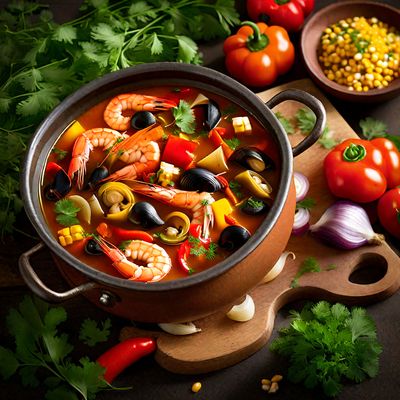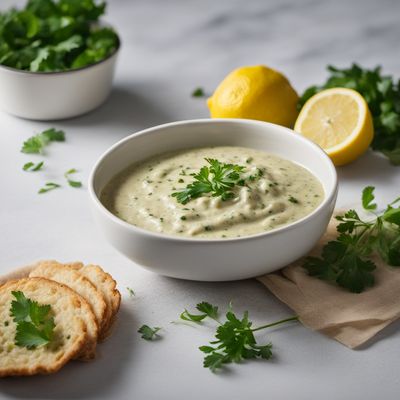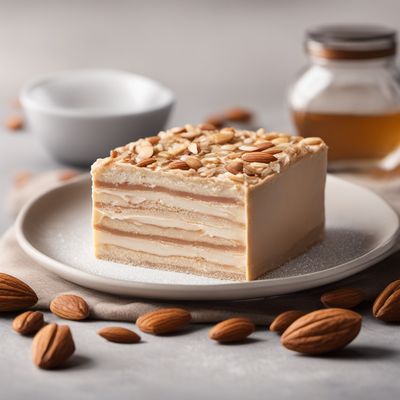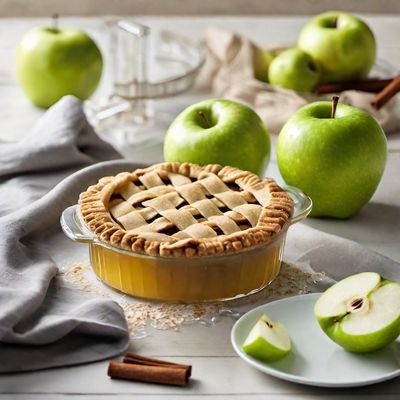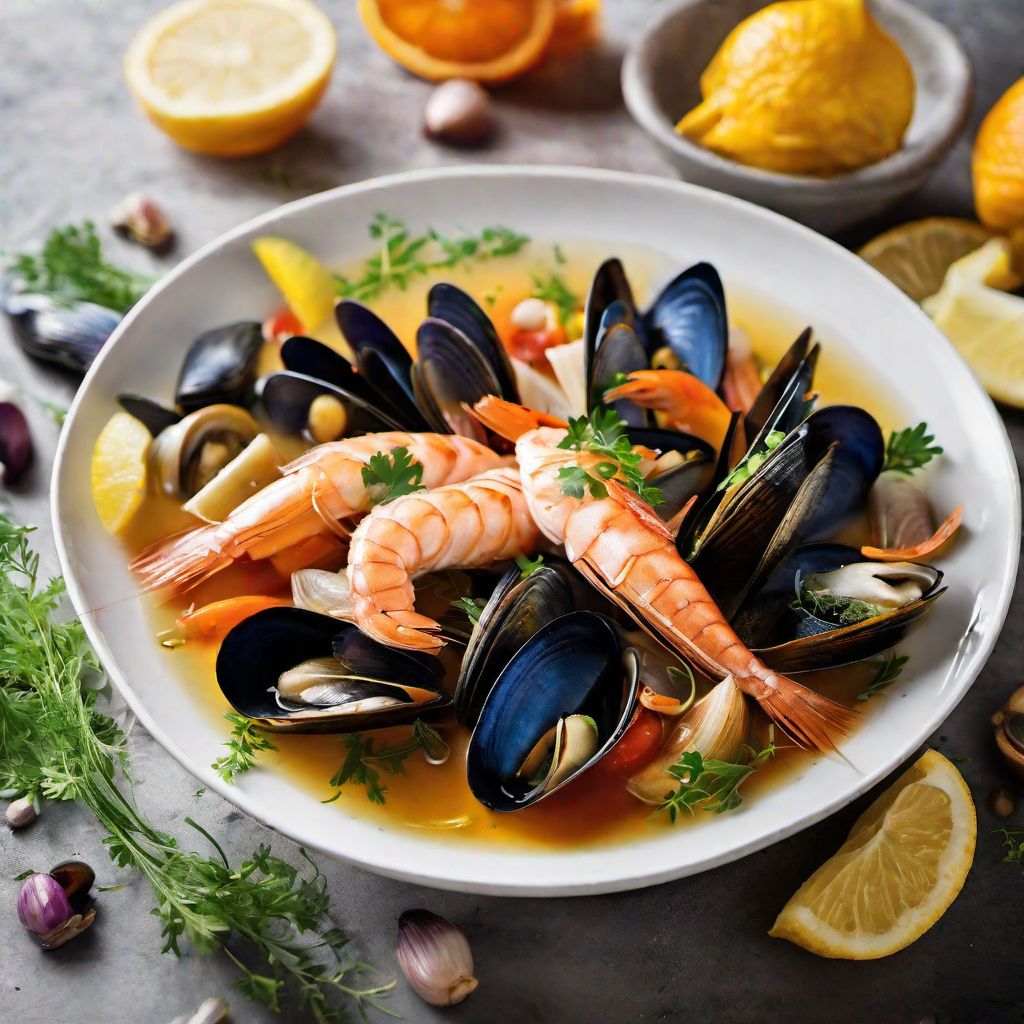
Recipe
Molecular Gastronomy Bouillabaisse
The Art of Bouillabaisse Reinvented: A Molecular Gastronomy Twist
4.8 out of 5
In the realm of molecular gastronomy, we push the boundaries of traditional cuisine, transforming classic dishes into innovative culinary experiences. This Molecular Gastronomy Bouillabaisse takes the essence of the traditional French seafood stew and presents it in a visually stunning and flavor-packed manner, showcasing the artistry of molecular gastronomy techniques.
Metadata
Preparation time
30 minutes
Cooking time
10 minutes
Total time
40 minutes
Yields
4 servings
Preparation difficulty
Medium
Suitable for
Pescatarian, Gluten-free, Dairy-free, Low-carb, Keto-friendly
Allergens
Fish, Shellfish
Not suitable for
Vegan, Vegetarian, Nut-free, Shellfish-free, Soy-free
Ingredients
While the traditional Bouillabaisse is a rustic fish stew, this molecular gastronomy adaptation focuses on deconstructing the flavors and textures of the dish. By utilizing modern techniques, we create unique presentations and intensify the taste sensations, elevating the dining experience to new heights. We alse have the original recipe for Bouillabaisse, so you can check it out.
-
500g (1.1 lb) fresh white fish fillets 500g (1.1 lb) fresh white fish fillets
-
200g (7 oz) mussels 200g (7 oz) mussels
-
200g (7 oz) clams 200g (7 oz) clams
-
200g (7 oz) shrimp 200g (7 oz) shrimp
-
200g (7 oz) squid 200g (7 oz) squid
-
1 onion, finely chopped 1 onion, finely chopped
-
2 garlic cloves, minced 2 garlic cloves, minced
-
2 tomatoes, peeled and diced 2 tomatoes, peeled and diced
-
1 fennel bulb, thinly sliced 1 fennel bulb, thinly sliced
-
1 orange, zest and juice 1 orange, zest and juice
-
1 lemon, zest and juice 1 lemon, zest and juice
-
1 sprig of fresh thyme 1 sprig of fresh thyme
-
1 sprig of fresh parsley 1 sprig of fresh parsley
-
1 bay leaf 1 bay leaf
-
500ml (2 cups) fish stock 500ml (2 cups) fish stock
-
100ml (1/2 cup) white wine 100ml (1/2 cup) white wine
-
50ml (1/4 cup) olive oil 50ml (1/4 cup) olive oil
-
Salt and pepper to taste Salt and pepper to taste
Nutrition
- Calories (kcal / KJ): 350 kcal / 1465 KJ
- Fat (total, saturated): 15g, 2g
- Carbohydrates (total, sugars): 10g, 4g
- Protein: 40g
- Fiber: 3g
- Salt: 2g
Preparation
-
1.In a large pot, heat the olive oil over medium heat. Add the chopped onion, minced garlic, and sliced fennel. Sauté until softened.
-
2.Add the diced tomatoes, orange zest, lemon zest, thyme, parsley, and bay leaf to the pot. Cook for a few minutes until the flavors meld together.
-
3.Pour in the white wine and let it simmer for a couple of minutes to reduce slightly.
-
4.Add the fish stock, orange juice, and lemon juice to the pot. Season with salt and pepper to taste. Bring the mixture to a gentle simmer.
-
5.Carefully add the fish fillets, mussels, clams, shrimp, and squid to the pot. Cover and cook for about 5 minutes or until the seafood is cooked through.
-
6.Remove the seafood from the pot and set aside. Strain the broth through a fine sieve, discarding the solids.
-
7.To serve, arrange the cooked seafood in individual serving bowls. Pour the strained broth over the seafood, ensuring it covers the ingredients.
Treat your ingredients with care...
- Fish fillets — Use the freshest fish available to ensure the best flavor and texture.
- Mussels and clams — Scrub the shells thoroughly and discard any that do not close when tapped.
- Shrimp — Remove the shells and devein before adding them to the dish.
- Squid — Clean the squid by removing the innards and cartilage. Cut into rings or slices for cooking.
Tips & Tricks
- For a more intense flavor, you can infuse the fish stock with additional aromatics such as lemongrass or saffron.
- Experiment with different seafood options based on availability and personal preference.
- To enhance the visual appeal, garnish the dish with microgreens or edible flowers.
- Serve the bouillabaisse with crusty bread or garlic crostini for dipping into the flavorful broth.
- If desired, you can add a touch of molecular gastronomy flair by incorporating edible foam or spheres as a garnish.
Serving advice
Serve the Molecular Gastronomy Bouillabaisse hot, allowing the vibrant colors and enticing aromas to captivate your guests. Accompany it with a slice of crusty bread or garlic crostini to soak up the flavorful broth.
Presentation advice
To create an eye-catching presentation, arrange the cooked seafood in a visually appealing manner in individual serving bowls. Pour the strained broth over the seafood, ensuring it covers the ingredients. Garnish with microgreens or edible flowers for an elegant touch.
More recipes...
For Bouillabaisse » Browse all
For French cuisine » Browse all
More French cuisine dishes » Browse all

Moules au safran
Mussels in Saffron Sauce
Moules au safran is a French dish that translates to "mussels with saffron". It is a popular dish in coastal regions of France and is often served...

Soufflé aux carottes
Carrot Soufflé
Soufflé aux carottes is a classic French dish made with carrots and eggs. It is a light and fluffy dish that is perfect for a brunch or a light lunch.

Fenouil braisé
Braised fennel
Fenouil braisé is a French dish made with braised fennel. It is a popular dish in French cuisine.


